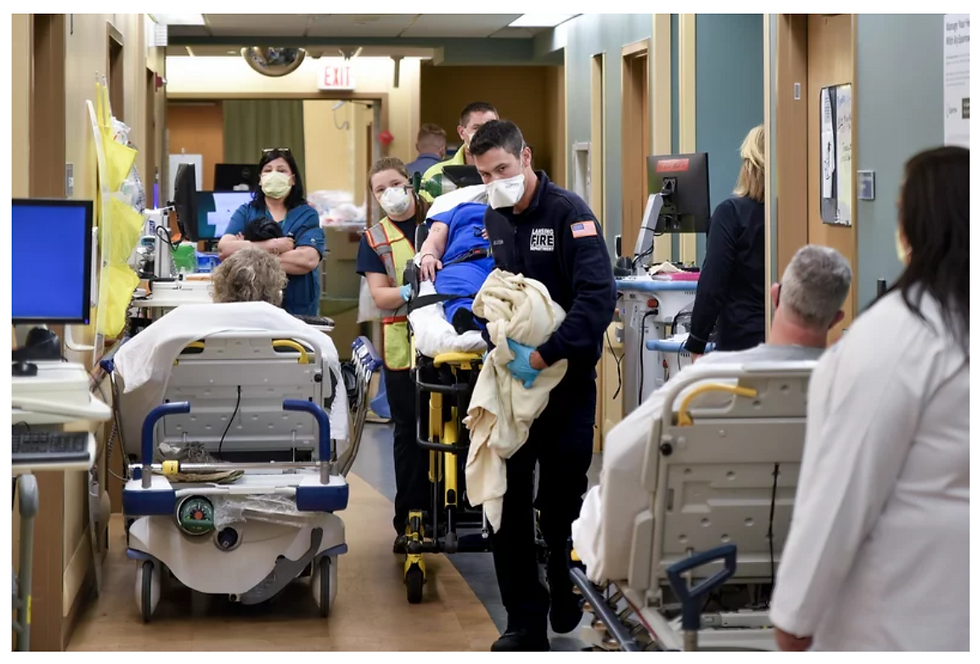WOC Nurse Week Special Edition - Why WOC Nurses Can't Be Taken Out Of The Equation
- katherinepiette
- Apr 20, 2022
- 3 min read
By Alicia Jenkins, Director of Clinical Services at Corstrata

You have patients with wounds on service. They are in your hospital, they are at home, they are in your facilities, your office, and on your services, but there are questions that seem to loom heavy. Who is responsible for managing these wounds? Is it the patient’s PCP, the hospitalist, the surgeon, the wound clinic, their home health nurse, their hospice nurse, this shift’s nurse or last shift’s nurse, or their caregiver? Who is responsible for the costs of wound care- supplies, assessments, expertise, chronicity, visits for care, and provider visits to monitor the progress of chronic wounds that become stalled and fail to heal in a timely manner?
Wounds are complex and patients are complicated. The best care plan for your patient depends on multiple variables. What setting are they in and who is providing the routine wound care? What access and availability of supplies, equipment and resources are there or where are there challenges?
We haven’t even addressed the wound(s) yet. Where are their wounds located? What is the age and etiology of each wound? What are the wound bed assessments, how large is the wound, what type of tissue is visible and what is the depth of tissue injury? Is tunneling or undermining present? What is the amount, color, and consistency of the wound drainage? Is there odor? What do the edges of the wound look like? Is the skin around the wound intact? Are there signs and symptoms of infection or wound deterioration? Does the patient complain of pain? What is the healing expectation and is debridement needed or contraindicated? Does the wound have an atypical or suspicious appearance? Are additional diagnostic tests or interventions needed to determine the etiology or promote healing?
Does the patient have medical comorbidities that are known to delay healing and have these been adequately treated? What medication or combination of medications does the patient take that might be interfering with healing and can any of these medications be held and for how long? What is the patient’s nutritional status? Do they take supplements to support healing or what meds or supplements does the patient need to support healing? What equipment is needed? What are they using to off-load pressure and prevent complications or reinjury?
Has the wound been present for over 6 months and, if so, is a biopsy indicated? Is osteomyelitis or poor circulation suspected? Has infection been adequately treated? What tests or diagnostic procedures are needed to evaluate for reasons for nonhealing (the stalled wound)? What specialists have the patient seen or do they need to see? If patient or caregiver non-compliance is an issue, what is the reason for non-compliance and how has it been addressed or how should it be addressed?
There are evidence-based guidelines to address various wound etiologies that must serve to help guide practice. However, wound recommendations and treatment plans must be customized for each patient in order to address the numerous factors that can impact healing, either in the promotion of wound healing or deterioration. Currently, there isn’t an algorithm or app with artificial intelligence that is able to consider every factor that impacts healing. Good wound care requires knowledge, experience, investigative work, and critical thinking skills. It is not for the faint of heart! Tools are important, but require expertise to accomplish their purpose. You can’t give me a jackhammer and expect me to build a tower without the knowledge, skills, and experience of an architect. Likewise, we can’t give patients, caregivers, and clinicians tools without the expertise to guide them in the management of these complex, chronic, and hard-to-heal wounds.
Clinicians with wound expertise cannot be taken out of the complex wound management equation:
Wound Etiology X Wound Assessment X Diagnostic Testing X Comorbidities X Medications X Nutritional Status X Supplies and Equipment X Able and Willing Caregivers X Good Wound Care X Compliance with the Plan of Care + WOC Nurse Expertise = Optimum Wound Healing Outcomes.
When wound healing isn’t an option, the WOC nurse is key to assisting in the development of a cost-effective treatment plan that protects the patient and their wounds from infection and decline, thus optimizing their quality of life.
So…. where do you find a WOC nurse if you need an expert wound care resource to support your practice, clinicians, and patients? We know WOC Nurses are a valuable and scarce resource with less than 10% practicing in the post-acute space. Corstrata can provide this valuable resource for providers and patients throughout the U.S. at the right place and the right time regardless of the setting. Our mission is to enable wound and ostomy patients to access fuller, more enjoyable lives by providing virtual access to our amazing team of WOC nurses.




Comments